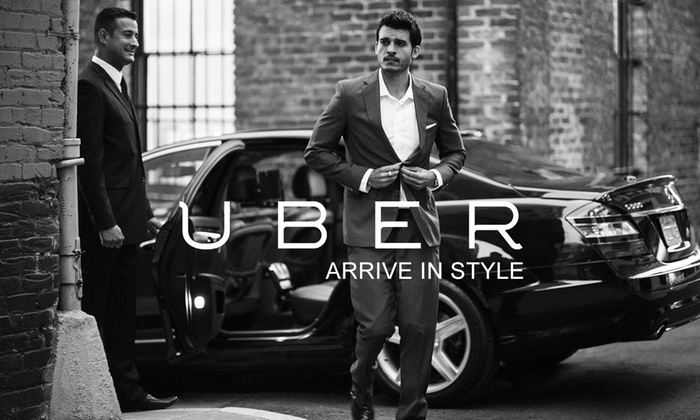Recently, I had the pleasure of meeting with a handful of senior marketers at a Marketing Society Dinner, where I’d been invited to share my views on key digital trends for the region in 2016.
As I mentioned at the time, my thinking on this subject has been strongly influenced by the fact that I recently shifted countries from Finland to China. The most unexpected consequence of the move? It’s the realization that right now, I might actually be living in the future.
Here’s why. At, Fjord, design and innovation from Accenture Interactive, we release an annual global trends report for all marketers to capture, in broad strokes, the most significant technology and business developments that we think will emerge in the year ahead.
But what I’m seeing in China is that many of these predictions are already taking shape – in intriguing ways. The market here continues to evolve at warp speed, and while most organizations in the West are still coming to grips with the second wave of digital disruption—mobile, in other words—consumer expectations in China are leaping ahead and changing the game. This means at a baseline level, companies really need to stay nimble, jumping on trends straight away and adapting their business models to suit.
So what are the new dynamics as far as Hong Kong and China are concerned?
‘Design from within’ is becoming more important
Fjord’s research reveals that in 2016, corporations will invest directly in business incubators and innovation labs, bringing design thinking and problem solving in-house.
That’s already happening here in China and it’s not hard to see why. As I’ve mentioned, you’d probably be hard pressed to find a more discerning customer than the digitally savvy Chinese consumer. These are customers who expect to be enchanted by brands with services that are intuitive and responsive, and can quickly pinpoint the factors that matter to them most.

All this is making it harder for brands to stand out from the crowd. In fact, brands in China face a broader competitive threat now than they have ever experienced - and the pressure to innovate is unprecedented. The result? Leading-edge businesses such as Weibo and WeChat are starting to bring design thinking in-house as it becomes more widely recognized as the catalyst for business change.
Design thinking is about applying an iterative, design-centered approach in order to come up with radically innovative solutions, based on a deep understanding of who your real stakeholders are and what they care about. But for in-house design teams to be successful, it’s vital for organizations to have buy-in from senior management, and actively support an innovation culture capable of extending organization-wide.
Part of this involves getting comfortable with an iterative approach, where apps are designed, developed and tested in repeated cycles. This requires a questioning mindset from the design team - one that’s flexible enough to continually reassess and adapt activities (perhaps from scratch) to meet the desired goals. This can be challenging in a business environment where consensus within teams and with your manager is something that’s highly prized. Yet that more traditional approach can go against the critical thinking good design thinking requires.
One way of overcoming this is for brands to appoint a chief design officer to streamline operations, help bridge departmental silos and encourage collaboration and co-creation workshops. Having the right mix of skills from facilitation to conceptualizing, prototyping and experimenting is vital to success.
The flattening of privilege
Fjord’s research also reveals how thanks to apps like Uber, Instacart and Nowait, many services that would have been considered high end are now readily available to everyone. Chauffeurs, dry-cleaning delivery or a meal in a five-star restaurant have now been brought to the masses. The mindset is that ordinary folk should be able to summon whatever they need instantly, with the tap of an app.

This certainly holds true in China, where such services are being eagerly adopted by consumers everywhere. What’s more, thanks to data ubiquity and end to end customer experience engineering, the trend is taking hold across a wide range of industries—from banking to health care, education, and shopping. In the future, any industry with traditional roles and privileged expertise will be challenged. For example, peer-to-peer lending will increasingly help people often rejected by typical banks.
Fjord’s view is that this trend opens up a gap in the true luxury market. What does it take to remain a luxury brand in this era of digital democratization? Companies should examine their role from the point of view of the consumer and explore how they could disrupt their service model, given that ‘delivering luxury’ can be done by anyone.
Services with manners
Most consumers say they don’t mind companies collecting some of their data if it truly results in their experience becoming more personalized. Fjord’s research reveals that this tension between giving a company your personal data for a better experience and trusting what it will do with the data will continue to be a major factor in the development of technologies. We call the etiquette of investing in respectful data practices 'services with manners.'

All this is especially important in China, with its strong digital-first mentality. Here, the challenge for brands is clear: keep delivering those personalized services while avoiding any concerns these customers might have about data privacy.
Fjord’s view is that to get ahead, companies should beef up resources dedicated to data privacy and security. Properly informing consumers about what they are locking into at each stage, rather than simply relying on terms and conditions, protects both them and the company from misunderstandings later on. On a systems level, invest in new platforms and technologies equipped to handle data responsibly through the supply chain.
Delighting customers through ‘living services’
To find out more about all these developments, I invite you to read the full Fjord Trends 2016 report. It reflects what our clients are asking for digitally, our experiences as citizens and users, and our well-informed guesses (we hope!) on the impact of emergent technology.
It also shows that what’s required is more than just great products or great advertising. Rather, it’s offerings that ‘wrap around’ customers - that combine the ability to generate meaningful consumer insights with the agility to act on those insights quickly and proactively. Brands that become a 'living service' in this way will be able to create the differentiated sales and service programs that will, in turn, enable them to acquire and retain more customers.
Iñaki Amate is managing director at Fjord, partner of The Marketing Society.
